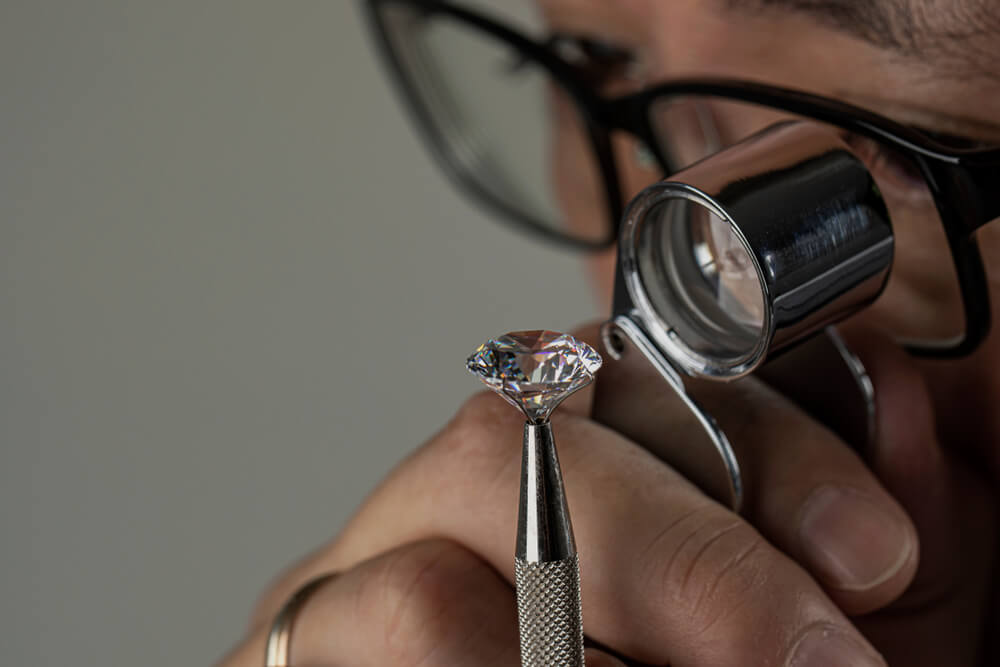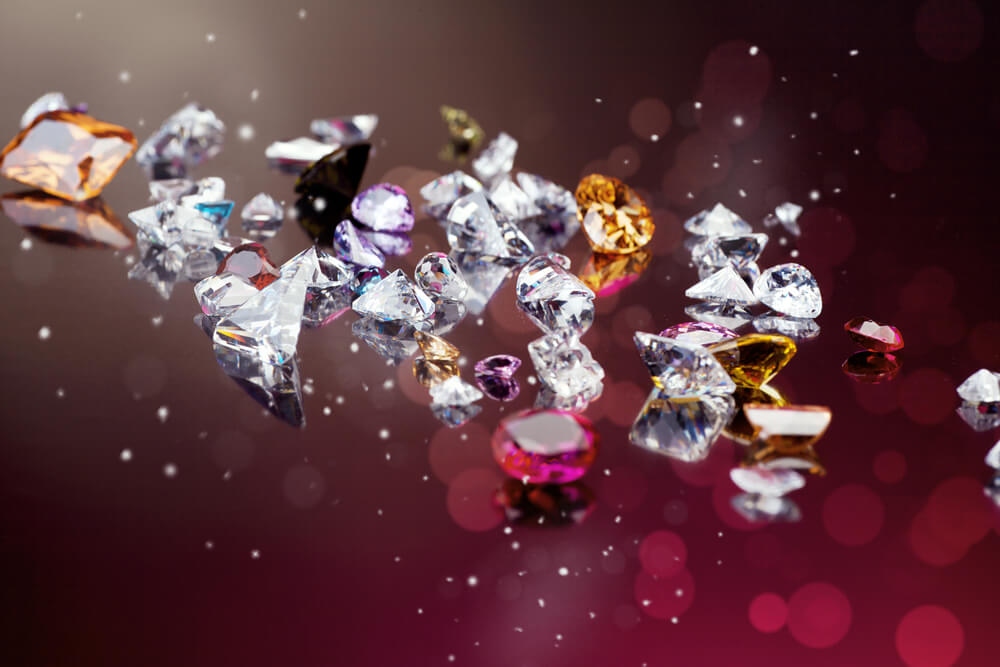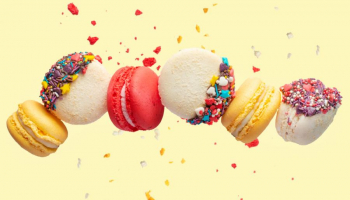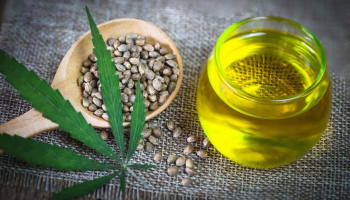
Diamond lovers of Chicago lament! Historic Jeweler’s Row, a downtown Chicago Landmark, is one of the many casualties of the novel Coronavirus pandemic. Selling precious stones may have been deemed a “nonessential business,” but tell that to the newly-engaged or connoisseurs who can’t say “no” to a good deal on a fine gem.
Still, as Chicagoans shelter in place like most of the country, there’s no reason to put the diamond hunt on hold. Online diamond sellers are open for business and ready to serve those of us social distancing—some of them even based on Wabash Avenue if, like most of Chi-town, you have a passion to support local businesses.
Nervous about buying a diamond without seeing it in person first? That just means it’s time to brush up on the Four C’s of Diamond Shopping.
Why Are Diamonds So Valuable?
The World Series Ring commissioned to commemorate the Cubbies’ 2016 Championship win is estimated to be worth $70,000. That’s just from the materials, including 214 diamonds weighing in at 5.5 carats, to say nothing of the rubies, emeralds, and gold. What gives? Why are diamonds so valuable?
Diamonds are made of 100% carbon. So, too, is charcoal, and the graphite in pencils. Additionally, carbon is the chemical building block of every cell in every organism. There’s no shortage of carbon on Earth. Why the high price tag?
Diamonds are a super-compressed form of carbon, formed naturally deep within the earth. Diamonds exist in abundance far below the crust, but they are so deep that we can’t get to them. The diamonds that make their way to the surface of the earth, intact, through geological processes, are few, far between, and usually fragments of the initial diamond structure.
You don’t necessarily have to dig in the earth to produce a diamond, however. Diamonds can also be grown in laboratories by subjecting carbon to high pressures and temperatures. While sometimes inaccurately called “syntactic diamonds,” lab-grown diamonds are real diamonds – they are chemically identical to mined diamonds in every way, with all the same physical and aesthetic properties.
Nevertheless, the beauty and durability of diamonds have captivated humankind for thousands of years. Able to glow and scintillate in dark places, they were considered magical, sources of mystical power coveted by warlords and emperors. Hard to find and almost as hard to shape into jewels, a high-quality diamond has always been expensive.
The 4 C’s of Evaluating Diamonds

So what makes a diamond “high-quality”? The worldwide diamond industry has established four standardized criteria on which diamonds are evaluated, sometimes referred to as the “Four C’s.” The Four C’s are as follows:
- Cut
- Color
- Clarity
- Carat Weight
Many online diamond dealers explain how each stone they sell measures up against these four criteria. This helps them justify the asking price for each product. Understanding each of the Four C’s and how they work together to contribute to the value of a diamond, you can shop intelligently for good diamond deals online while the Jewelry District is shuttered.
Cut
Raw diamonds pulled out of the earth are beautiful in their own right, but to achieve the aesthetic impact of a diamond ring, the diamond must be cut. Diamonds are one of the hardest minerals on earth. Cutting them to maximal beauty requires skill and precision.
Diamonds may be cut into round shapes or any other shape. The smooth “faces” that each cut forms are called facets. The facets work together to give the cut diamond its overall shape and luminous sparkle.
Diamond Cut Terminology:
- Crown: The top of the diamond.
- Pavilion: The bottom of the diamond.
- Brightness: White light reflected off the diamond.
- Fire: Flashes of color within the diamond.
- Scintillation: The way light plays off the lighter and darker masses inside the diamond.
- Brilliant Cut: A round cut that returns maximal light through the top of the diamond.
- Modified Brilliant Cut: Variations on the brilliant cut that are not round.
- Step Cut: A cut that features “steps” at the crown and down the sides.
- Mixed Cut: Resembling a brilliant cut at the crown, a step cut at the pavilion.
- Rose Cut: Flat pavilion, domed crown. A vintage diamond cut.
- Proportions: The ratios of the length, width, and depth of the stone.
- Symmetry: Precision of the cut.
- Polish: The glow or shine of the finished stone.
Diamond Cut Ratings in Descending Order of Value:
- Ideal Cut (most valuable)
- Excellent Cut
- Very Good Cut
- Good Cut
- Fair Cut
- Poor Cut (least valuable)
Color

The most valuable diamonds are colorless. The less color the stone exhibits, the more pure its chemical makeup. Truly colorless diamonds are rare stones indeed.
Diamonds can occur naturally in many colors, including gray, pink, blue, yellow, orange, red — nearly every color of the rainbow, with yellow being the most common. Colored diamonds may be beautiful in their own right, but they are not as valuable as colorless diamonds.
Every diamond sold in the US gets a color grade — a letter between D and Z based on how it compares to established master stones.
The color scale is as follows, in descending order of value:
- D-F: colorless (most valuable)
- G-J: near colorless
- K-M: faint color
- N-R: very light color
- S-Z: light color (least valuable)
Clarity
How much a cut diamond is worth depends a great deal on its clarity. If a diamond has visible variations in its interior structure, known as “inclusions,” it has less clarity. Chips on the surface as the result of damage or a bad cut, known as “blemishes,” also factor into the clarity, not the cut.
Diamonds with a low clarity rating are usually less brilliant and may even look muddy or cloudy.
Each diamond gets a clarity rating with an alphabetical shorthand. Here’s how to interpret that shorthand, in order of descending value:
- FL: “Flawless.” No blemishes or inclusions detectable. Most valuable.
- IF: “Internally flawless.” No internal inclusions, slight blemishes visible at 10x magnification.
- VVS1 and VVS2: “Very, very slightly included.” Minor inclusions, hard to see even at 10x magnification.
- VS1 and VS2: “Very slightly included.” Minor inclusions visible at 10x magnification but invisible to the naked eye.
- SI1 and SI2: “Slightly included.” Inclusions visible to the naked eye.
- I1, I2, and I3: “Included.” Obvious inclusions visible to the naked eye which may undermine the durability of the stone. Least valuable.
Carat Weight
You don’t have to be a pro jeweler to make sense of carat weight. It’s the raw mass of the stone, as measured by a calibrated scale.
Ancient diamond traders, lacking reliable scales, used the seeds of the carob tree to estimate the weight of a diamond — hence the term carat.
Today, a carat is officially 200 mg of diamond weight. Each carat is divided into 100 “points,” enabling jewelers to measure their diamonds down to the nearest 2 mg.
Usually, the higher the carat weight, the more valuable the diamond. But, of course, the other three C’s affect the value as well.
Lower-carat diamonds can actually look bigger than some higher-carat diamonds, depending on the cut.
Conclusion
By mastering the Four C’s of diamond shopping, you can continue your search for the perfect diamond, for yourself for your beloved, without having to make the risky trek to the Loop–which is a waste of an El ride until Jeweler’s Row reopens.
If it’s the haggling you actually miss more than the diamonds — well, there’s always Zoom.
You Might Also Like:









